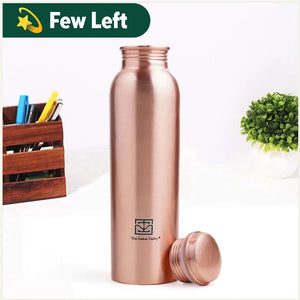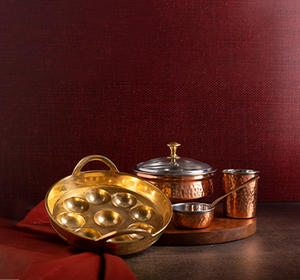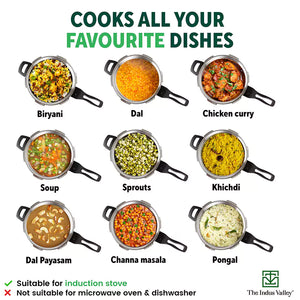When a chef cooks, the quality of the dish is determined by more than just the recipe or the chef's expertise. The cookware used plays an important role in the quality of the taste too.
Pans are one of the most important pieces of equipment in a chef’s arsenal and are used for everything from making sauces to cooking pasta. But what pans do the pros at cooking use in their back-of-the-house action?
In a restaurant, you will notice a variety of different pans, including stainless steel pans, cast iron pans, aluminium pans and more. However, most chefs prefer to use stainless steel pans when preparing food. The Indus Valley offers a range of Tri-ply Stainless Steel Pans, ideal for cooking chef-like meals at home.

Why chefs prefer stainless steel cookware over aluminium cookware?
Stainless steel is a highly durable material and doesn’t chip, peel or scratch easily like soft metals such as aluminium. As chefs have to handle vigorous, pan-clanging cooking day in and day out, they tend to lean toward stainless steel cookware instead of aluminium cookware.
Another massive reason why stainless steel cookware has always been the chef’s favourite is the fact that it doesn’t react with acidic foods. This means, unlike aluminium cookware, stainless steel keeps metals from leaching into your meals, resulting in healthier and tastier servings.
However, aluminium cookware has its own set of advantages too. For example, aluminium is a faster and more responsive conductor of heat, making it a great choice for fry pans.
The Indus Valley has mixed the goodness of both stainless steel and aluminium and is presenting Tri-ply Stainless Steel Cookware.
This revolutionary series has a layer of aluminium core sandwiched between two layers of stainless steel, which allows for perfectly even heating.
Do chefs use non-stick cookware?
No, most professional chefs do not use non-stick cookware, especially non-stick fry pans. Before knowing why, let’s understand what non-stick cookware is. Non-stick cookware refers to utensils with surfaces from which the food simply slides off.
Typically, a layer of Teflon makes up the non-stick surface of a non-stick fry pan.
Restaurants don’t have non-stick pans as they do not match the basic demands of a busy kitchen. For a chef who has to send a dish out every two minutes, non-stick cookware is not a viable option as it wouldn’t last longer than a week.
Aside from that, non-stick fry pans are unable to produce one of the most essential ingredients that chefs use in many appetising gravies and pan sauces: fond.
Fond is the crusty browned bits of vegetables and meat that are stuck on the bottom of the frying pan after searing. Some chefs absolutely dislike using non-stick frying pans in their kitchen. Let’s discover the reasons in detail.
Why do some professional chefs hate nonstick pans?
They heat up slowly: Working in a busy kitchen, chefs are on the constant lookout for fry pans and other cookware that can heat up quickly. Sadly, non-stick frying pans disappoint here by exhibiting slow heat transfer due to the Teflon coating. Whereas, the stainless steel pans from The Indus Valley’s latest Tri-ply Stainless Steel cookware range heat up evenly in no time.
Harmful Teflon coating: Perfluorooctanoic acid (PFOA), which was considered cancerous, has not been a part of teflon production since 2013. Nevertheless, if heated at high temperatures for a long time, the uppermost layer of non-stick pans still releases toxic fumes. This is why chefs are reluctant to use non-stick pans.
Fragile in nature: Non-stick cookware is not made for heavy-duty cooking and requires constant maintenance to avoid scratching and damage. They are not dish-washer friendly and need to be hand-washed gently as being reckless with them may rip off the Teflon coating.
Other reasons why professionals dislike using non-stick frying pan sets include the fact that they are not oven-friendly and can’t be used with metal utensils. The stainless steel pans from The Indus Valley are a great alternative to non-stick pans.
Difference between stainless steel and non-stick cookware
The major difference between stainless steel and non-stick cookware is the material used for the bottom of the pan. This non-stick material, as discussed earlier, is easy to clean but requires more frequent and gentle cleaning.
On the other hand, stainless steel pans can handle rough cooking and cleaning while requiring very little maintenance thanks to their sturdy nature.
Non-stick fry pans are a preferred choice when cooking on low heat as the external coating suffers damage when exposed to excessive heat. You could use non-stick pans for more delicate meals like crepes, eggs, pancakes and more. However, non-stick cookware cannot produce the searing effect, which means it excludes many of the more popular recipes.
Stainless steel cookware, being the workhorse of your kitchen, can be used for making pretty much anything, including steaks, pork, chicken, and braises.
A multi-ply frying pan with an aluminium core is recommended for the best results when cooking at high temperatures.
The Indus Valley is a leading provider of high-quality and long-lasting cookware that quickly becomes the highlight of your kitchen. Check out our latest collection of Tri-ply stainless steel cookware today.
FAQs
What are Gordon Ramsay’s favourite pans for cooking?
Chef Gordon loves using a variety of heavy-duty stainless steel pans for browning, braising and searing. He recommends having 2-4 qt. and 6-8 qt. steel saucepans with tight lids and a 12″ stainless steel pan for general sautéing and frying.
Is stainless steel cookware safe for my health?
Being an alloy of chromium, nickel, silicon, and carbon, stainless steel provides a completely safe cooking surface with no leaching possibility. It is also non-reactive and non-toxic to your food.
Are stainless steel frying pans non-stick?
Inherently, no. However, a well-seasoned stainless steel pan can serve as a non-stick surface if it is heated up with butter or oil until it is hot enough to sear.
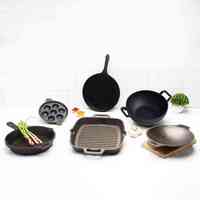
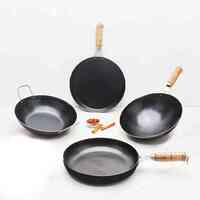
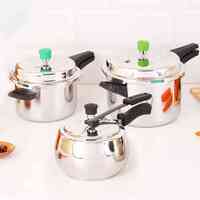
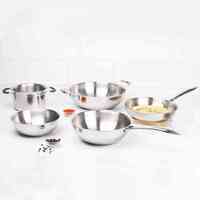
 Easy 7-Day Return
Easy 7-Day Return
 Additional ₹100 Off on Prepaid Orders*
Additional ₹100 Off on Prepaid Orders*



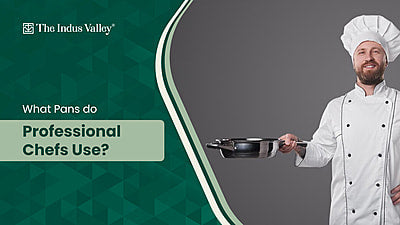
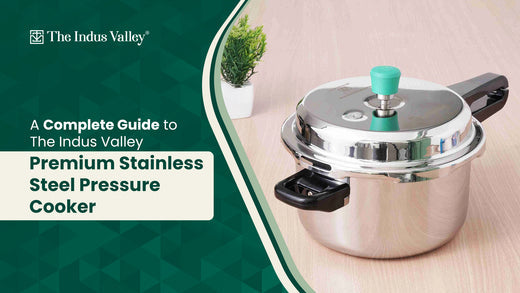
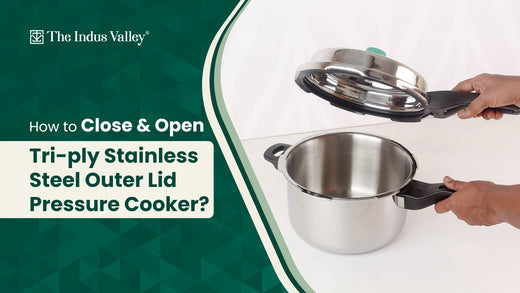
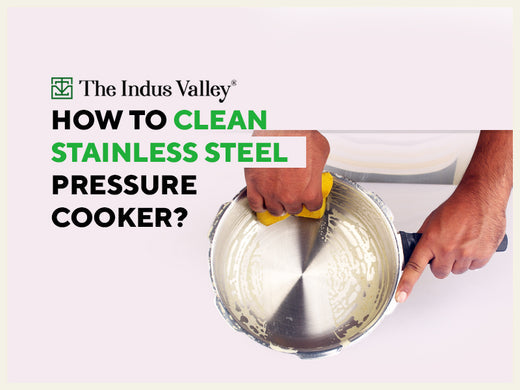
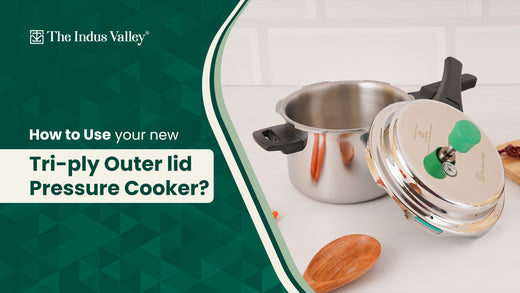
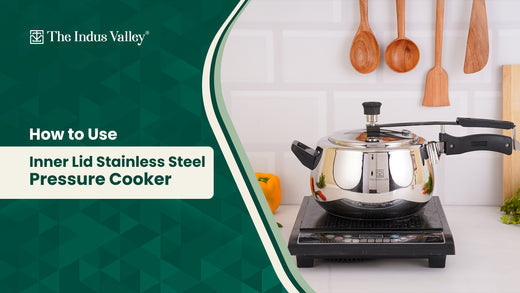
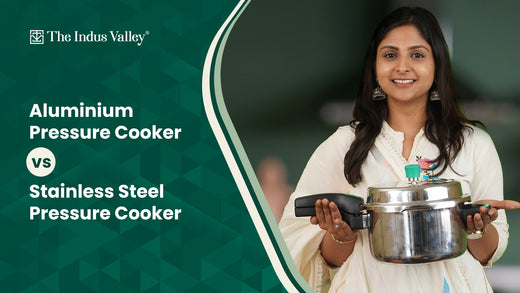
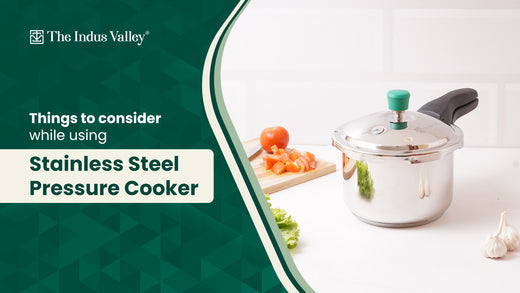
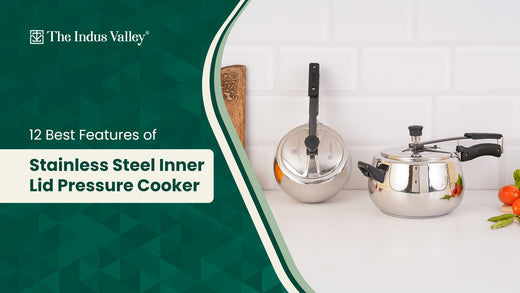

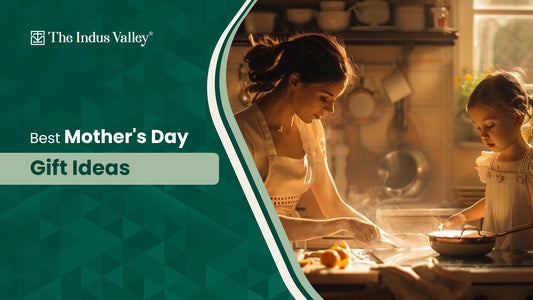
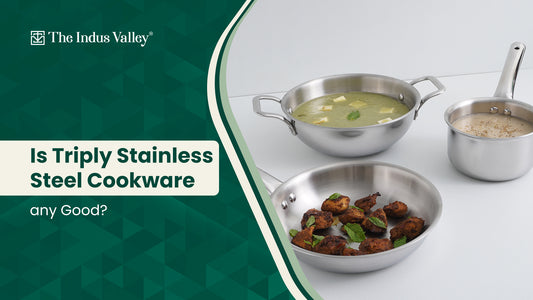
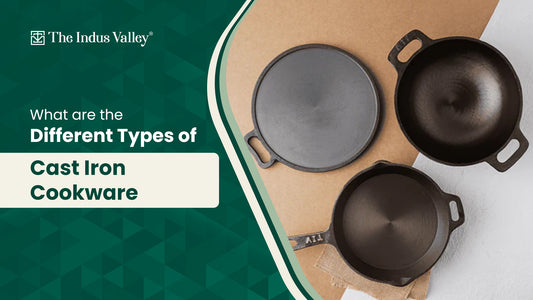
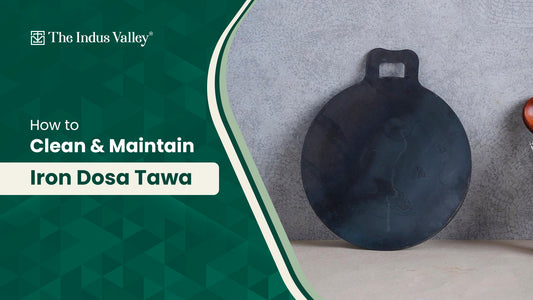
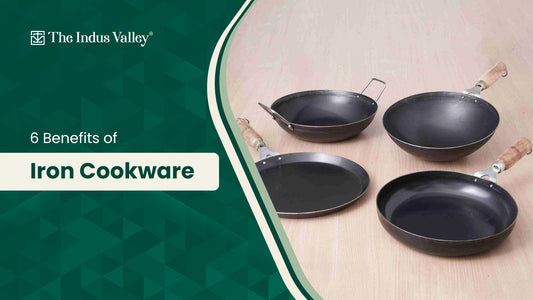
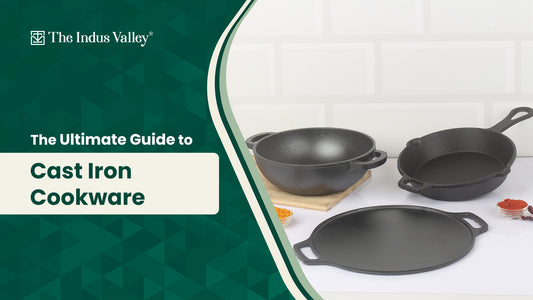
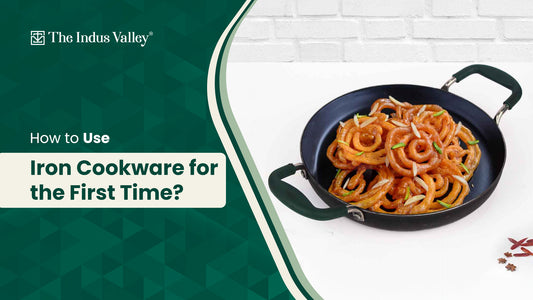
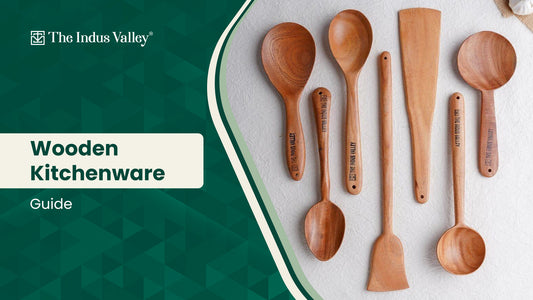
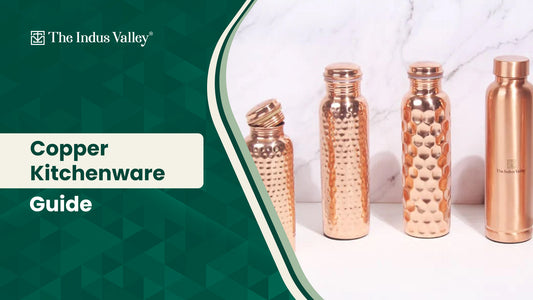
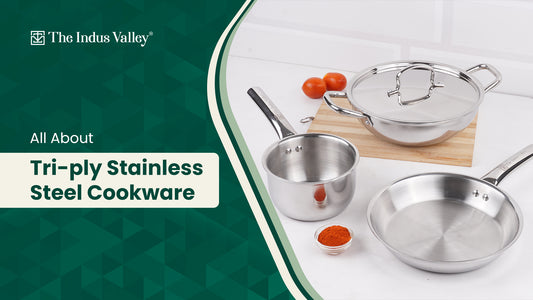
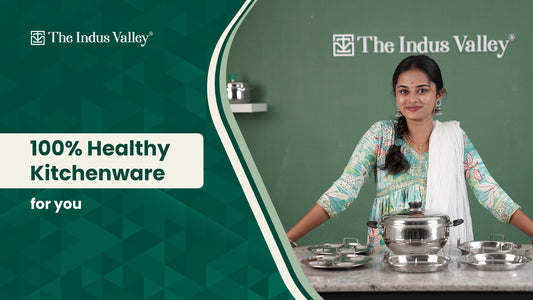
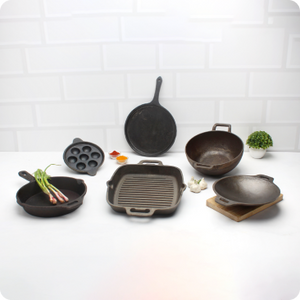
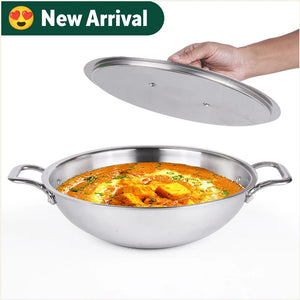
![Neem Wood Spatulas for cooking & Serving – Thick, Long, Sturdy, Large [Set of 6] (Round Serve) - The Indus Valley](http://www.theindusvalley.in/cdn/shop/files/neem-wood-spatulas-for-cooking-and-serving-thick-long-sturdy-large-set-of-6-round-serve-the-indus-valley-1_fcf2cb78-6504-4601-8062-5df2233000c1_300x.jpg?v=1686290651)
